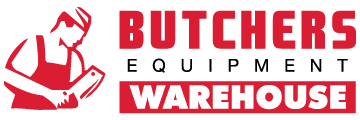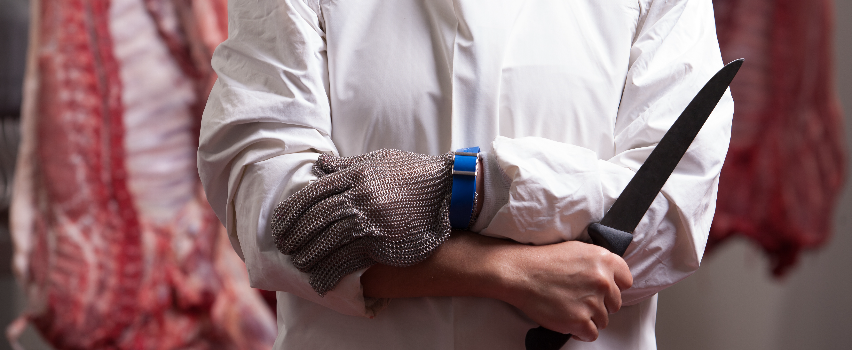When is the best time to use a knife steriliser?
Whatever your environment, or the exact nature of your butchery, hygiene is always going to be one of your overriding top priorities. That’s exactly where knife sterilisers come in. They’re exceptionally useful for stripping away any harmful bacteria on your blades, as well as protecting the quality of the meat you prepare – and of course, ultimately safeguarding the reputation of your business. Even if you’ve already got a grip on when the best times are to use your knife sterilisers, it’s always worth quickly refreshing your knowledge, especially if any of your team could do with related training.
As a supplier with more than 35 years of experience to our name here at Butchers Equipment Warehouse, you can count on us to know the best points to use a knife steriliser – so here’s what you need to know.
The 5 best times to use a knife steriliser
Essentially, a lot of it comes down to gut instinct and common sense. If you or your team suspect that any knives need to be sterilised, then there’s a good chance that’s a wise action to take. Without a shadow of a doubt though, there are five distinct occasions in a working day when you need to turn to your steriliser. Here’s a quick round-up.
Before starting your shift
At the very beginning of the day, it’s best to run your knives through the steriliser. Even if you washed them before storage, blades that have been left overnight in racks, boxes, or drawers can pick up bacteria and dust from the surrounding environment. Sterilising them before the first cut removes that risk and guarantees that every knife you pick up in the morning is fit for handling fresh meat. This step also sets the tone for the rest of the day, reinforcing that idea that hygiene is all-important – which is a particularly good way to lead by example to the rest of your team.
When switching between different meats
Without question, the steriliser should always be used as soon as you move from one type of meat to another. Poultry often carries pathogens such as salmonella, while beef, pork, and lamb each come with their own risks. If any bacteria ends up being carried from one product to the next, the chance of cross-contamination rises sharply. Sterilising at these transition points clears the blade completely and ensures that your next task begins with a safe, sanitised tool.
After breaks and interruptions
It’s not unusual for knives are often placed on worktops or left in holding areas during breaks. Surfaces, airborne particles, and contact with gloves or clothing can all introduce bacteria while you’re away. So, on returning to your workstation, it’s best to put the knife through the steriliser before handling meat again. It’s a good way to remove anything that might have settled on the blade during downtime, and as an extra bonus it gives you assurance that the knife is ready for immediate use.
At the end of the working day
Once the last cut has been made, it’s best to place every knife in the steriliser before cleaning and storage. A full day of butchery work leaves blades carrying traces of raw meat and bacteria. Sterilising at the end of the shift ensures that those traces don’t remain overnight. It also helps protect the integrity of the blades themselves, because residual organic material can encourage corrosion or dull the cutting edge if left untreated.
After sharpening your knives
Sharpening a knife exposes a new metal surface and produces fine particles of steel. If these filings are left in place, they can easily end up in the meat you prepare. Running the knife through the steriliser immediately after sharpening clears away those particles and sanitises the blade, so you can have peace of mind in knife that’s both sharper and fully safe for food preparation.
How to use a knife steriliser during daily operations
So, that’s the when covered – now we’ll move on to the ‘how’. Knife sterilisers must always be brought to the correct operating temperature before you insert any knives. Whether you’re using a hot water model or a steam-based system, the unit needs enough time to reach full heat so that any bacteria is properly eliminated. It’s important not to skip this stage as it can easily end up undermining the entire process, as knives won’t be exposed to sufficient conditions to guarantee sanitation.
When placing knives into the steriliser, make sure to always follow the slot system provided. The blades must always be fully submerged or fully exposed to the steam for the required time. Cutting edges that are left partially uncovered don’t benefit from complete sterilisation, and removing knives too early interrupts the process before it can achieve its purpose. Instead, make sure that each knife is always kept at the correct exposure for a sufficient amount of time, as this ensures that all bacteria are destroyed before the blade returns to service.
The steriliser itself requires daily attention to stay effective. You’ll need to monitor water or steam levels and check the condition of heating elements. If the unit isn’t performing at full strength, knives may not reach the required hygiene standard. It’s yet another good reason to build equipment checks into your daily routine – it ensures that your steriliser continues to work at peak capacity, protecting both your workflow and your customers.
3 crucial factors to consider when timing sterilisation
Several influences affect how often you should sterilise knives – beyond the five key situations we’ve already covered above.
The type of meat you’re handling
We briefly touched on this above, but every meat type presents its own microbial challenges. Poultry carries risks such as salmonella, beef can host E. coli, and pork or lamb may bring other contaminants, so if you’re processing a high volume of higher-risk meats, your knives will need to go into the steriliser more frequently. The nature of the product you’re cutting directly influences how tight your sterilisation schedule should be.
The volume of work during the day
A butchery that handles large orders or continuous processing tends to put knives through more use in less time. The more you cut, the more often bacteria accumulate on the blades, so if you’re dealing with high volumes then sterilisation needs to happen at shorter intervals, not just at breaks or product changes.
Regulatory compliance and inspections
UK food safety regulations require strict hygiene standards to be maintained in every butchery setting. Inspectors look for clear evidence that knives are sterilised regularly, and falling short can expose your business to warnings or penalties. So, you’ll need a schedule that fits your products and output volume while also meeting regulatory expectations, so you can have complete confidence that all your knives (and staff) remain compliant. Again, it helps protects your customers and shields your business from unnecessary risk.
That’s all the essentials covered! And of course, if you ever need any new knife sterilisers – or replacements – you’re in exactly the right place. Here at Butchers Equipment Warehouse, we offer a wide range of butchery equipment and spare parts to ensure you’re fully prepared for the busy months ahead. Our products are designed to meet the rigorous demands of the industry, providing reliability and efficiency when you need it most.
As well as our knife sterilisers, here you can find a wide range of meat mincers, butchers bandsaws, and butchers knives and sharpeners. If you ever need any help or advice in choosing exactly the right equipment for you, you can always give us a call on 01254 427761. We’re here to help!




